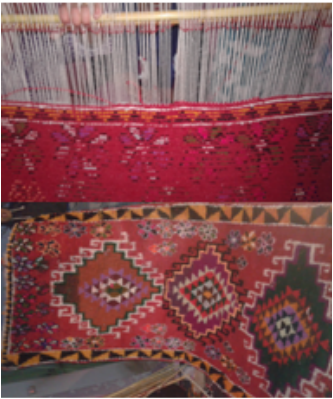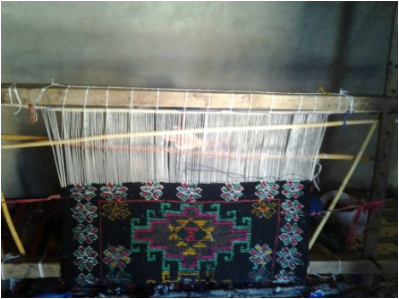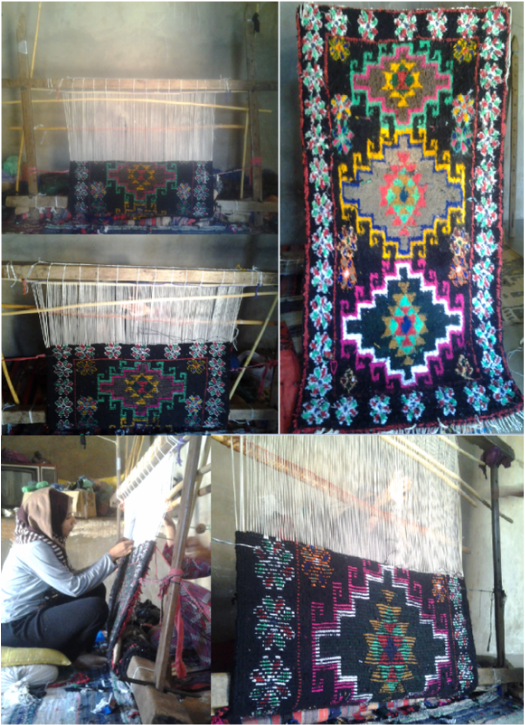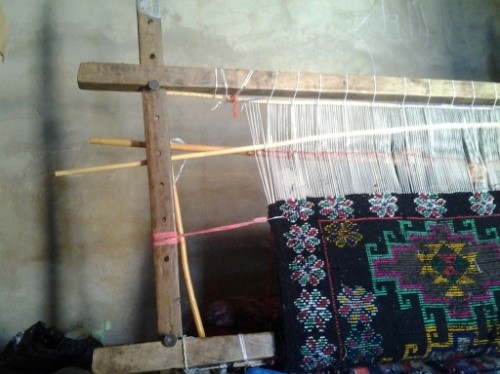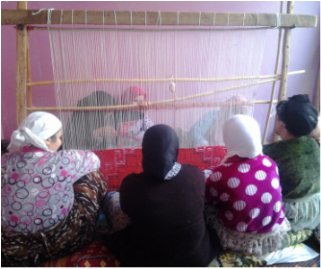Written by CorpsAfrica/Maroc Volunteer Ms. Hafssa Ait Tabamoute
During the first two days after moving to my site, “Tiwichi,” I participated in putting the last touches on a carpet one my host family’s neighbor was making. Since then, I knew that I just love the way these women and girls are collaborating and helping each other to weave a very beautiful carpet, with such beautiful patterns, and in a very intelligent way with very simple, yet, important tools.
The thing about carpet weaving is that two or three girls can sit in front of the equipment to design the pattern they agreed on, but the most interesting thing is that two or three more girls can make it from behind the equipment, which makes them finish it in a very little time.
It has been a week now that my host sister decided that she wants to make a carpet. I, unfortunately, wasn’t there from the first day to see how they organized and put together the carpet’s equipment, but I was there to hear all these traditions, beliefs, and bride-related stories about making carpets.
I learned to make it from both sides, but for my host sister’s carpet I was sitting from behind the carpet in order to be able to count the number of knots of the flower pattern I was designing at the left of the carpet and trying to do the same flower with the same number of knots and colors. The flower was made by green, red, white, and blue colors, so I was counting how many knots for each color and trying to do the same thing.
It might seem easy, but believe me, it is not, because you need to stay really concentrated to avoid mixing colors or losing the pattern’s shape.
We were in the third line making knots of the flower when one of the girls working from the front of the carpet asked me to give her some water. I handed her the glass between where the carpet ends in the right and the wooden pole that holds the carpet yarns, and I was surprised when she said: ‘’no, don’t pass it in between it will bring me bad luck at my wedding.’’
I have been talking with the girls about some others traditions or stories related to the carpet weaving, and Soukaina, my host sister, told me that when a girl gets married she is not allowed to touch or to make any carpet until making ‘’a7erchich oumlil.’’ “A7erchich oumlil’’ is also made with the carpet materials, but with only white yarn. Only after that can she participate in helping the other girls or women weave or she can start making one for herself.
Moreover, when someone comes while the girls are working and he or she wants to shake their hands saying ‘’hi’’ from the top of the carpet material, the girls who are not married refuse. They think that if they do it they would get married to one of the douars (little villages) that are situated near to the mountains. Actually, girls do not prefer to get married to those places.
I used to watch women and girls, back in the village of my father when I was a little girl, how they made the carpet, but I never paid attention to the materials it is made with, which shows how our grandparents used such smart methods and techniques to create simple, yet beautiful daily life items.

